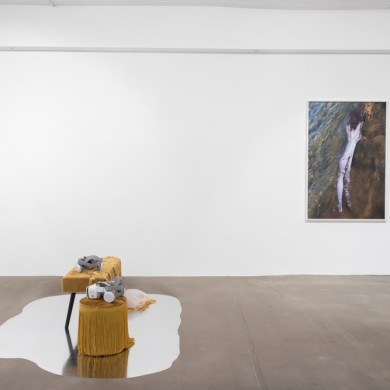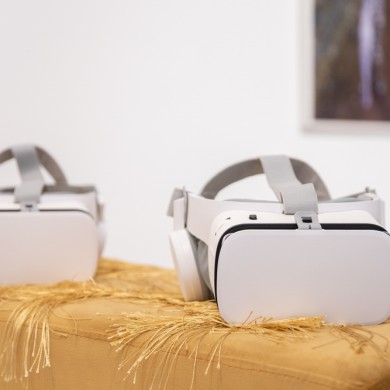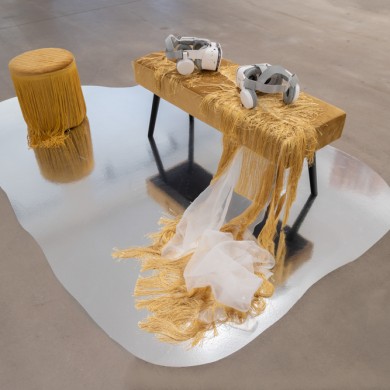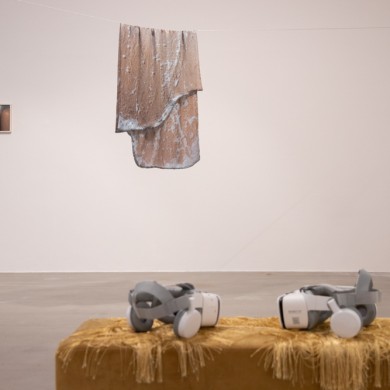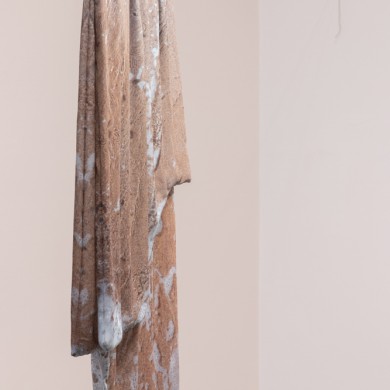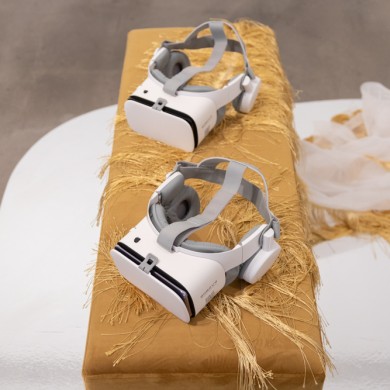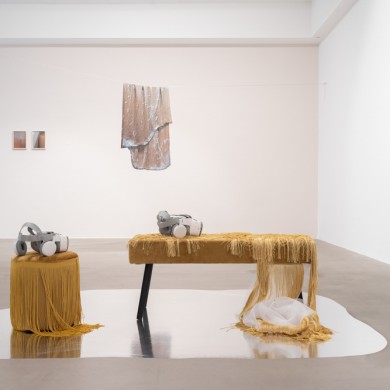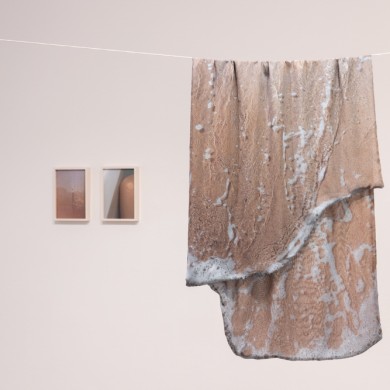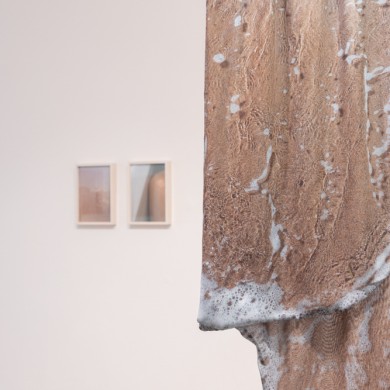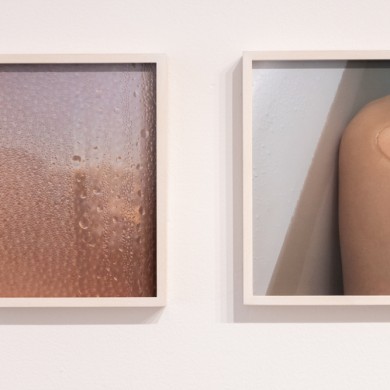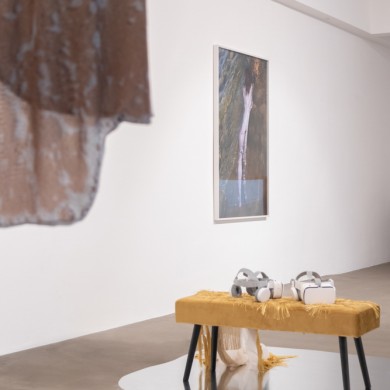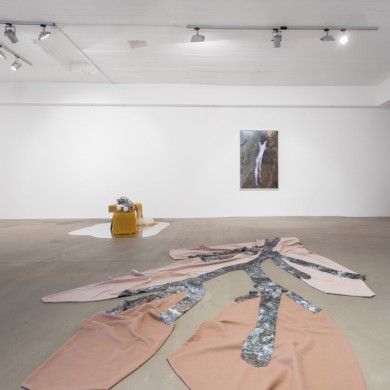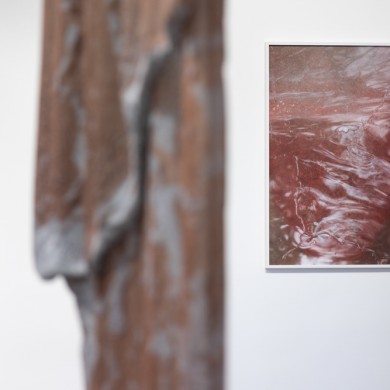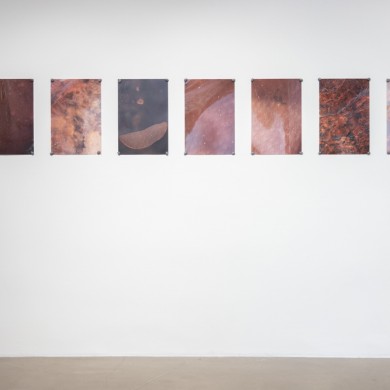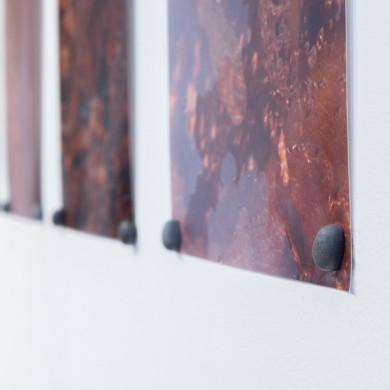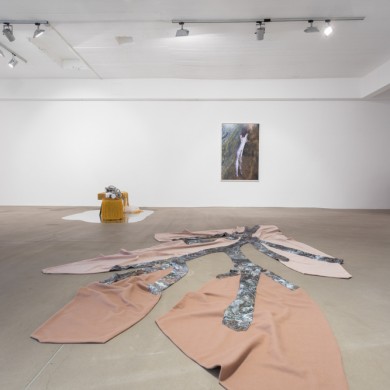LUCIA SCERANKOVÁ: HEART SEAS
5 Apr – 2 May 2023
ZAHORIAN & VAN ESPEN Bratislava
Water is fluid, it does not respect boundaries, it overflows, it seeps, it represents
a frightening depth, but also a soothing float on a calm surface. We can be inspired by water, and feel the power of its flow in our own bodies, or learn to receive and give
in the rhythm of the waves. Heart Seas, the title of Lucie Sceranková’s exhibition –
in which water becomes a metaphor for the experience of motherhood, life energy,
the foam of days, a cleansing bath, but also a mirror of lived experience – is taken from a book by British anthropologist Veronica Strang, who describes the inner sea that flows through the heart and sustains its tides.
This is not the first time that Lucia’s work has explored the connection between
the elements and the human body, and her current research on water also builds on
a number of previous projects realised in the form of photographs, videos, and spatial installations (Drinking Salty Water Does Not Help, 2020; River, 2014; Level, 2013; Quiet Water Washes the Shores, 2012; Sea 2011, etc.).
Today, water is studied in terms of politics, economics, anthropology, and contemporary art. As a result of climate change, once again, we need to deal with the questions and challenges associated with the sea level rise, the availability of drinking water and the sustainability of its quality. Water is liquid, it does not respect any borders, it overflows, flows from one point to another, soaks into the ground, it can pose as a danger, represent depth, power, come as a flood, but also have the form of a cleansing bath, a soothing rocking or mirroring on a calm surface. As Karolina Majewska-Güde recently reminded us in the connection with the artwork of Ewa Partum New Horizon is a Wave, the ocean used to have a completely different “metaphorical potential—it was an image of infinity”—whereas today, it is “an image of the western feeling of guilt”. 1
But instead of regretful self-blame, we can use the crisis as an opportunity and start learning from water: plunge into the waves, let ourselves be permeated by them, feel the power of water flowing in our own body, perceive our emotions that are associated with that, look for new horizons of imagination that come from the metaphors that water awakens in us, and find new connections: “Water is a connector,
a differentiator, a facilitator, a communicator. It brings all kinds of bodies into intimate contact, despite and because of our differences.”2
The title of the exhibition—in which water becomes a metaphor for the experience of motherhood, life energy, the froth of days, a cleansing bath, but it also represents a mirror of a lived experience—, is inspired by Veronica Strang’s book and her description of an inner sea that flows through the heart and keeps its tides flowing: “The inner seas also flow through the heart, holding its tides of feeling. Not only do the body’s physiological responses to emotions express themselves in fluid terms — the flush of blush, the surge of the pulse, the coursing of the blood — water also serves to articulate ideas about what emotions do. Feelings rise and fall, sometimes they flood, running out of control’, so that we are carried away by them. They ebb, leaving feelings of emptiness. Water’s transformative characteristics are particularly helpful in describing how emotions freeze and thaw, heat and cool. In the metaphors through which behavior is described people may be icy and hard; warm and embracing. Intimacy may be positively ‘steamy’, and ‘inter-course’, with its literal fluid exchanges (like those involved in breastfeeding or blood transfusion) represents the ultimate flow of life and being across the boundaries of the individual self.
To dissolve boundaries and. mix fluids is to merge identity and feeling, as Wordsworth put it:
She wept. Life’s purple tide began to flow
In languid streams through every thrilling vein;
Dim were my swimming eyes, my pulse beat slow,
And my full heart was swell’d to dear delicious pain.”3
The impulse to elaborate on the topic of water based on the work of this British anthropologist originally arose from Karina Kottová and Piotr Sikora and their invitation to the festival of contemporary art Narracje in Gdańsk in 2020. However, due to the pandemic, the festival was being pushed back, and Lucia’s intended project—in an entirely new form—could have been realised only now. But it is far from the first time when Lucia devotes herself to the elements and the human body in her work, and her current study of water follows a number of previous works (Drinking Salty Water Does Not Help, 2020; River, 2014; Surface, 2013; Still Waters Run Deep, 2012; Sea, 2011; and more). Additionally, the topic of liquidity resonates with Lucia’s long term reflections on the permeability of a photograph’s surface, on an unrest in the frame and on an infinite flow of images, resulting in installations in which—same as in this exhibition—she often uses variously deformed, crumpled or cut-out photographs located in space. But this is not a detached reflection of the medium, rather a search for a way how to share an experience of reality. This time, among other things, Lucia draws on her own experience with childbirth and its empowering potential, connected with a real sense of an inner union with the elements, with the acceptance of uncontrollable power that does not attack us from the outside, but makes up our integral part. We become the sea, we feel the waves, and in harmony with them, we learn to breathe, accept and give./ Hana Buddeus
LUCIA SCERANKOVÁ: HEART SEAS
5.4. – 2.5.2023
ZAHORIAN & VAN ESPEN Bratislava
Voda je tekutá, nerešpektuje hranice, prelieva sa, vsakuje sa, predstavuje desivú hĺbku, ale aj utišujúce splývanie na pokojnej hladine. Vodou sa môžeme inšpirovať a tiež pocítiť silu jej prúdenia vo vlastnom tele alebo sa učiť prijímať i dávať v rytme vĺn. Názov výstavy Lucie Scerankovej – Heart Seas, v ktorej sa voda stáva metaforou zážitku materstva, životnej energie, peny dní, očistným kúpeľom, ale aj zrkadlom prežitej skúsenosti, je inšpirovaný knihou britskej antropologičky Veronicy Strang a jej opisom vnútorného mora, ktoré preteká srdcom a udržuje jeho príliv a odliv.
Nie je to zďaleka prvýkrát, čo sa Lucia vo svojej práci venuje prepojeniu živlov a ľudského tela, a aj jej aktuálny výskum vody nadväzuje na celý rad predchádzajúcich projektov, realizovaných vo forme fotografií, videí a priestorových inštalácií (Drinking Salty Water Does Not Help, 2020; Rieka, 2014; Hladina, 2013; Tichá voda brehy myje, 2012; Moře 2011 ad.).
Voda sa dnes skúma z hľadiska politiky, ekonómie, antropológie, aj súčasného umenia. V dôsledku klimatických zmien sa musíme znovu vysporiadať s otázkami a výzvami súvisiacimi so zvyšovaním hladiny oceánov, s dostupnosťou pitnej vody a udržateľnosťou jej kvality. Voda je tekutá, nerešpektuje hranice, preteká, prelieva sa, vsakuje sa, môže predstavovať nebezpečenstvo, hĺbku, silu, povodeň, ale aj očistný kúpeľ, tíšivé kolísanie, alebo zrkadlenie na pokojnej hladine. Ako nedávno pripomenula Karolina Majewska-Güde v súvislosti s dielom Ewy Partum Nový horizont je vlna (New Horizon is a Wave), oceán mával úplne iný „metaforický potenciál – bol obrazom nekonečna“, zatiaľ čo dnes je „obrazom západného pocitu viny”.1 Namiesto ľútostivého sebaobviňovania však môžeme krízu využiť ako príležitosť a začať sa od vody učiť: vnoriť sa do vĺn, nechať sa nimi prestúpiť, pocítiť silu prúdenia vody vo vlastnom tele, vnímať naše emócie s tým spojené, hľadať nové obzory imaginácie vychádzajúce z metafor, ktoré v nás voda prebúdza, a nachádzať nové spojenia: „Voda je prvkom spojovacím, rozlišovacím, sprostredkovacím, komunikačným. Napriek našej rozdielnosti, ale aj vďaka nej, privádza všemožné druhy tiel do intímneho kontaktu.“2
Názov výstavy, v ktorej sa voda stáva metaforou zážitku materstva, životnej energie, peny dní, očistným kúpeľom, ale aj zrkadlom prežitej skúsenosti, je inšpirovaný knihou Veronicy Strang a jej opisom vnútorného mora, ktoré preteká srdcom a udržuje jeho príliv a odliv:
„Vnútorné moria prúdia aj srdcom a nesú príliv a odliv jeho pocitov. Nielenže sa fyziologické reakcie tela na emócie vyjadrujú tekutými termínmi – rozlievajúci sa rumenec, vzdúvajúca sa hruď, prúdenie krvi – voda slúži tiež na opis predstáv spôsobených emóciami. Pocity stúpajú a klesajú, niekedy nás zaplavujú a vylievajú sa z brehov, takže sme nimi unášaní.
Potom opadnú a zanechajú pocit prázdnoty. Transformatívne vlastnosti vody sú obzvlášť užitočné pri vyjadrovaní toho, ako sa emócie pokrývajú ľadom a topia, rozpaľujú sa a chladnú.
V metaforách, ktoré opisujú správanie, môžu byť ľudia chladní a neprístupní, či vrelí a upokojujúci. Intimita môže byť určite ‚vrúca’, a ‚splynutie’ s doslovnou výmenou tekutín (napríklad pri dojčení alebo transfúzii krvi) predstavuje vrcholný tok života a bytia ponad hranice individuálneho ja.
Rozpúšťanie hraníc a miešanie tekutín predstavuje spojenie identity s pocitmi, ako to vyjadril Wordsworth:
She wept. Life’s purple tide began to flow
In languid streams through every thrilling vein;
Dim were my swimming eyes, my pulse beat slow, And my full heart was swell’d to dear delicious pain.“3
Impulz na rozpracovanie témy vody na základe práce tejto britskej antropologičky vzišiel pôvodne z pozvania od Kariny Kottovej a Piotra Sikoru na festival súčasného umenia Narracje v Gdansku v roku 2020. Pre pandémiu sa však festival odsúval a Luciin zamýšľaný projekt sa – v úplne novej podobe – mohol realizovať až teraz. Nie je to zďaleka prvýkrát, čo sa Lucia vo svojej práci venuje živlom a ľudskému telu, a jej aktuálny výskum vody nadväzuje na celý rad predchádzajúcich prác (Drinking Salty Water Does Not Help, 2020; Rieka, 2014; Hladina, 2013; Tichá voda brehy myje, 2012; Moře 2011 atď.). Téma tekutosti navyše rezonuje s Luciinými dlhodobými úvahami o priepustnosti povrchu fotografie, o nepokoji v ráme a nekonečnom toku obrazov, čoho výsledkom sú inštalácie, v ktorých často využíva rôzne zdeformované, pokrčené alebo vystrihnuté fotografie umiestnené v priestore. Nejde tu ale o abstraktnú reflexiu média, skôr o hľadanie spôsobu, ako zdieľať zážitok skutočnosti, ako v prípade filmu “Waves”. Lucia okrem iného tentoraz vychádza z vlastnej skúsenosti s pôrodom a jeho silným emancipačným potenciálom, spojeným s reálnym pocitom vnútorného zjednotenia so živlami, s prijatím neskrotnej sily, ktorá na nás neútočí zvonku, ale je našou neoddeliteľnou súčasťou. Stávame sa morom, ohmatávame vlny a učíme sa v súlade s nimi dýchať, prijímať aj dávať./ Hana Buddeus
1 Karolina Majewska-Güde, Oceán nemusí být vždy vstřícný, Artalk, 17. 3. 2019. Dostupné online: https:// artalk.cz/2019/03/27/ocean-nemusi-byt-vzdy-vstricny (vyhľadané 4. 12. 2022).
2 Astrida Neimanis, Bodies of Water: Posthuman Feminist Phenomenology, London: Bloomsbury 2017.
3 Veronica Strang, Water, London: Reak4on Books Ltd 2015.
Projekt podporil z verejných zdrojov Fond na podporu umenia ![]()
Výstava vznikla v spolupráci a za finančnej podpory galérie Fotograf v Prahe![]()
